This easy, homemade pizza dough comes together using only 5 ingredients and can be made completely by hand. No expensive mixer needed! Let's learn how to make it.
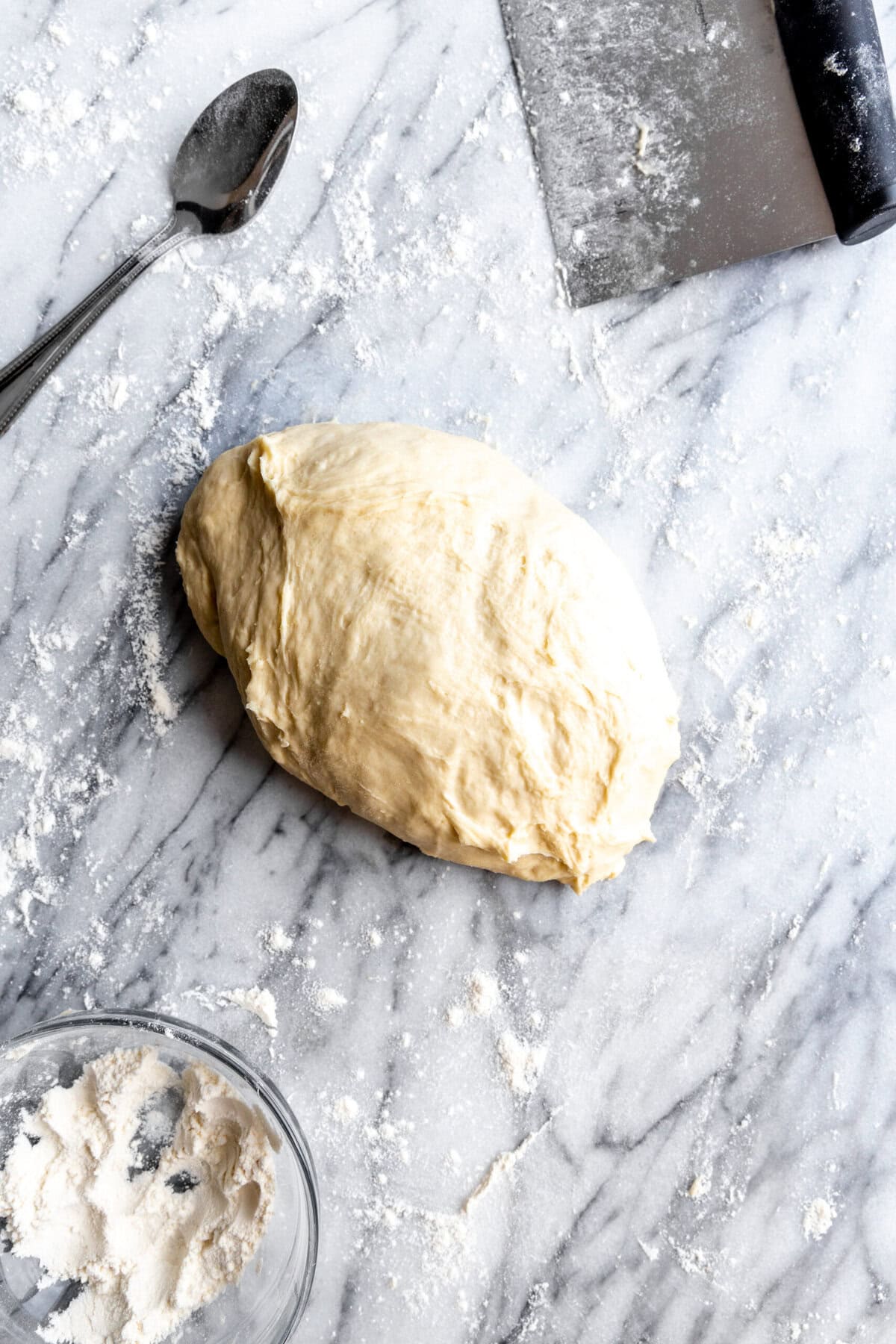
There is something deeply satisfying about making pizza at home. You can add all the toppings you want (no corporate skimping!) and the textures and flavors are absolutely unmatched.
This dough is made using incredibly simple methods and minimal equipment making it ideal for both beginner and more seasoned bakers.
Looking for more guided recipes and tips? Be sure to check out our baking "how to" posts!
Also, if you like this recipe, you'll absolutely adore our easy no-knead bread!
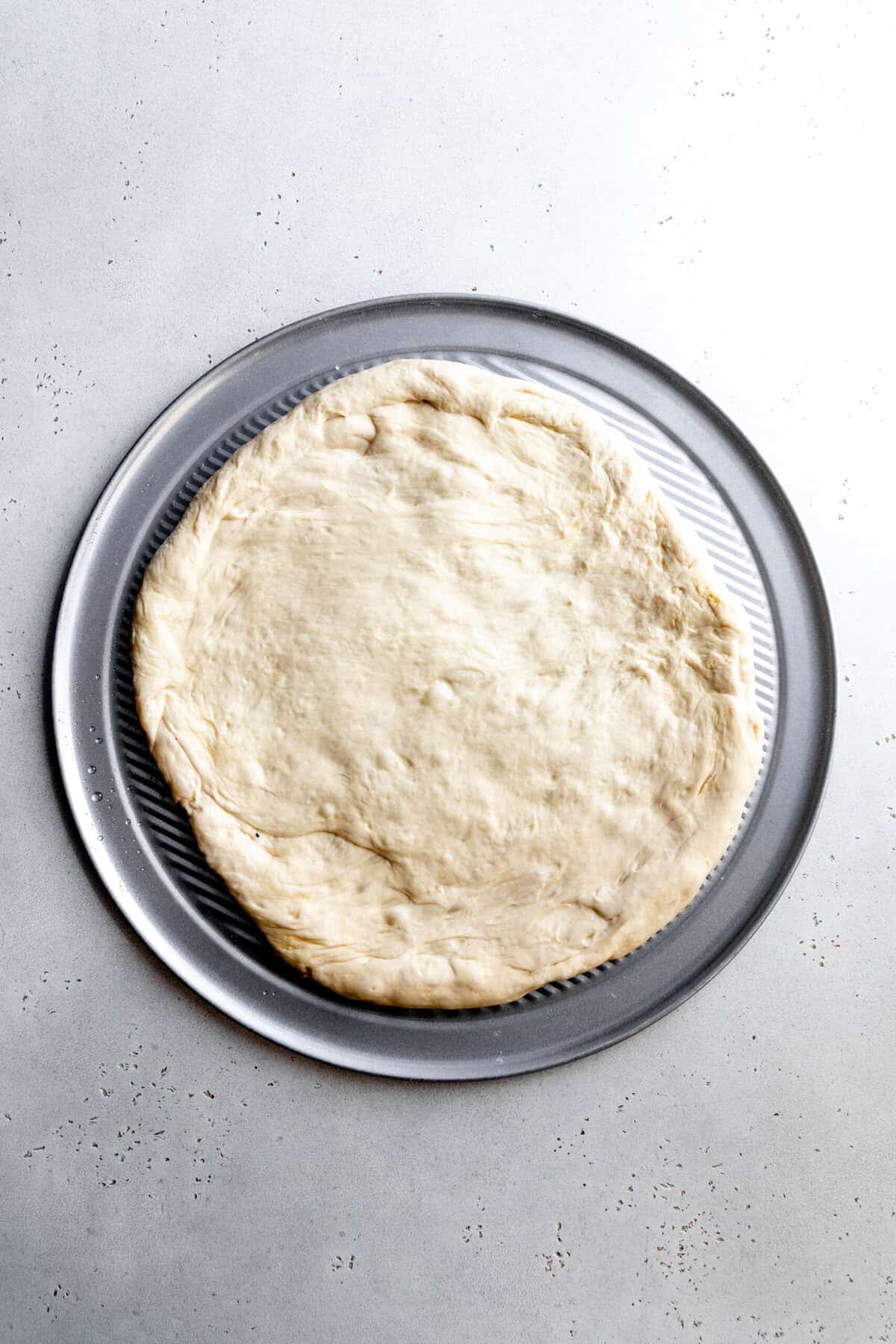
Ingredients
- warm water (about 110°F): Activates the yeast and hydrates the flour to form the dough. The temperature is key-warm enough to wake up the yeast but not so hot that it kills it.
- granulated sugar: Feeds the yeast so it can produce carbon dioxide, which helps the dough rise. It also adds a touch of flavor and helps with browning.
- active dry yeast: The leavening agent that makes the dough rise, giving it a light and airy texture.
- bread flour: Provides structure, chew, and elasticity thanks to its higher protein content compared to all-purpose flour.
- olive oil: Adds flavor, makes the dough softer, and helps create a crisp yet tender crust when baked.
- salt: Enhances flavor and strengthens the gluten structure, which improves the dough's texture and chewiness.
How to Make Homemade Pizza Dough (with pictures!)
Please see the recipe card at the bottom of the page for full instructions and ingredient measurements.
- Yeast: Begin by blooming the yeast. Add the yeast and the sugar to a glass mixing cup and stir together. Cover and set aside for 5 minutes or until frothy.
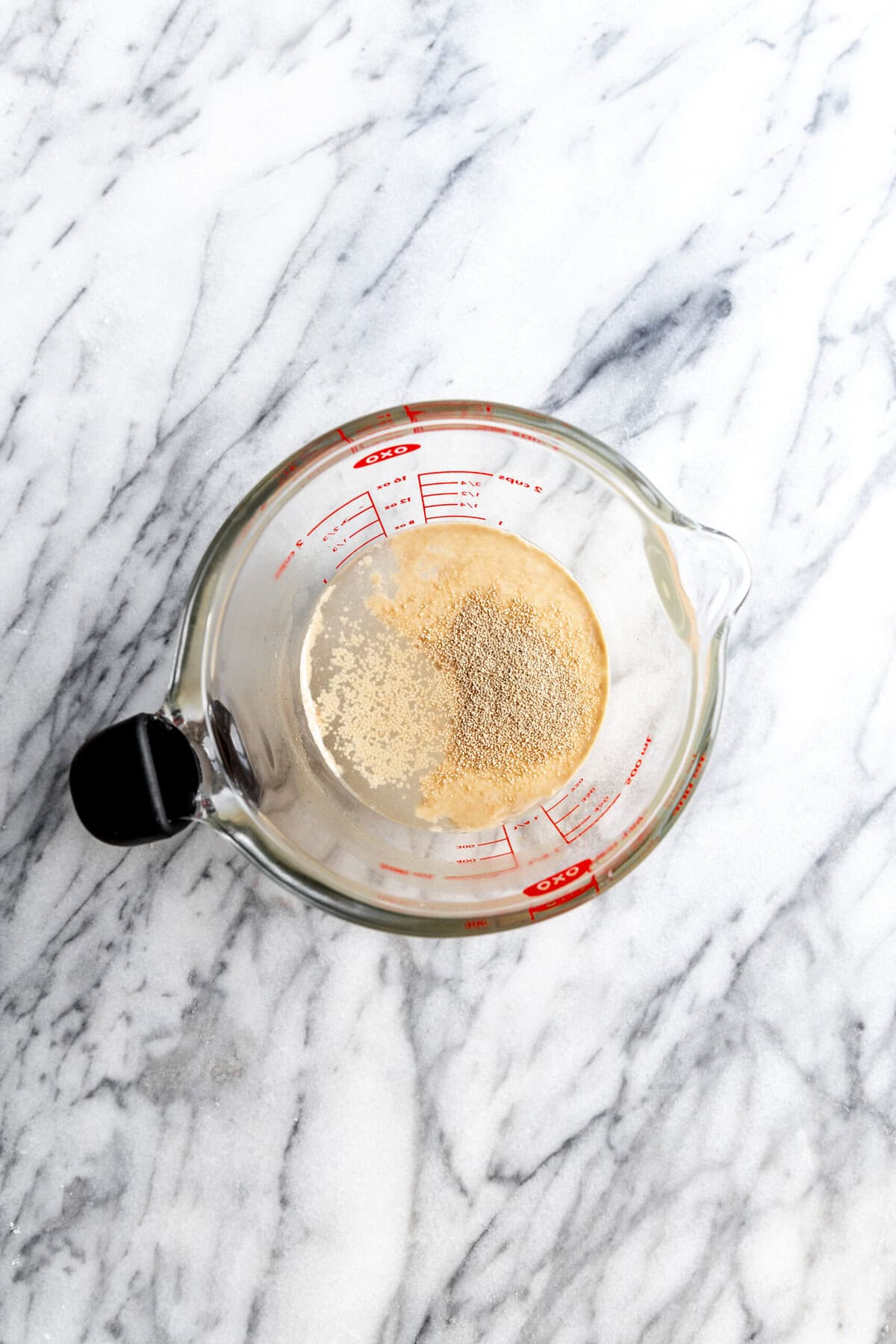
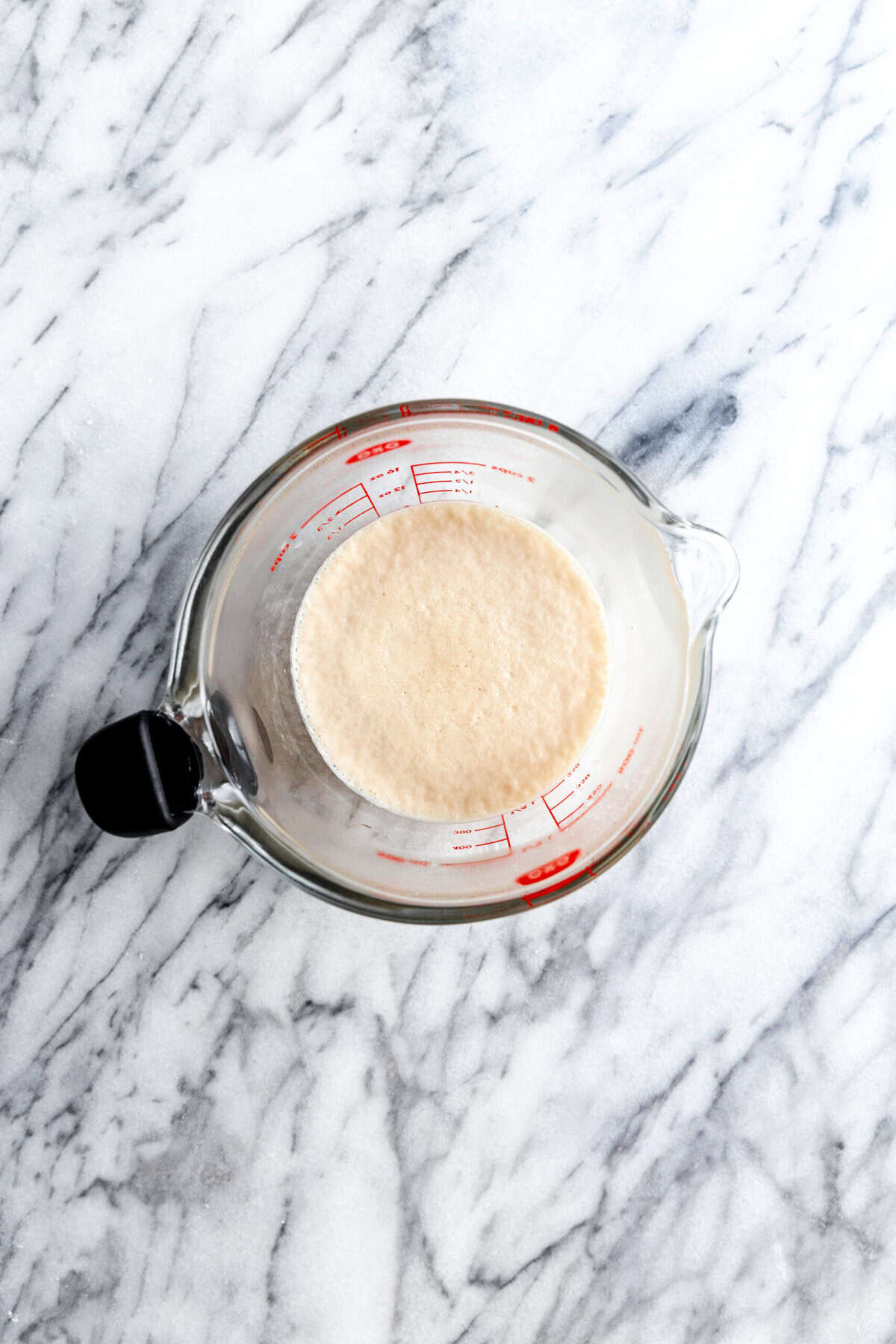
- Mix: Add the bread flour, olive oil and salt to a large mixing bowl. Mix together. Form a well in the center and pour in the yeast mixture. Stir together using a rubber spatula or a wooden spoon until a wet dough comes together. Keep stirring until the dough begins to pull away from the sides of the bowl.
- Knead: Turn out the dough onto a well-floured surface and knead for 5-10 minutes.
- Rise: Place the dough in an oiled bowl, turning to coat all sides. Cover and set aside to rise for 60-90 minutes or until the dough has doubled in size.
- Shape: Punch down the dough and roll out onto a lightly-floured surface. Spread into a 10-12 inch circle using your hands or a rolling pin. Transfer to a greased pizza pan and add your desired toppings!
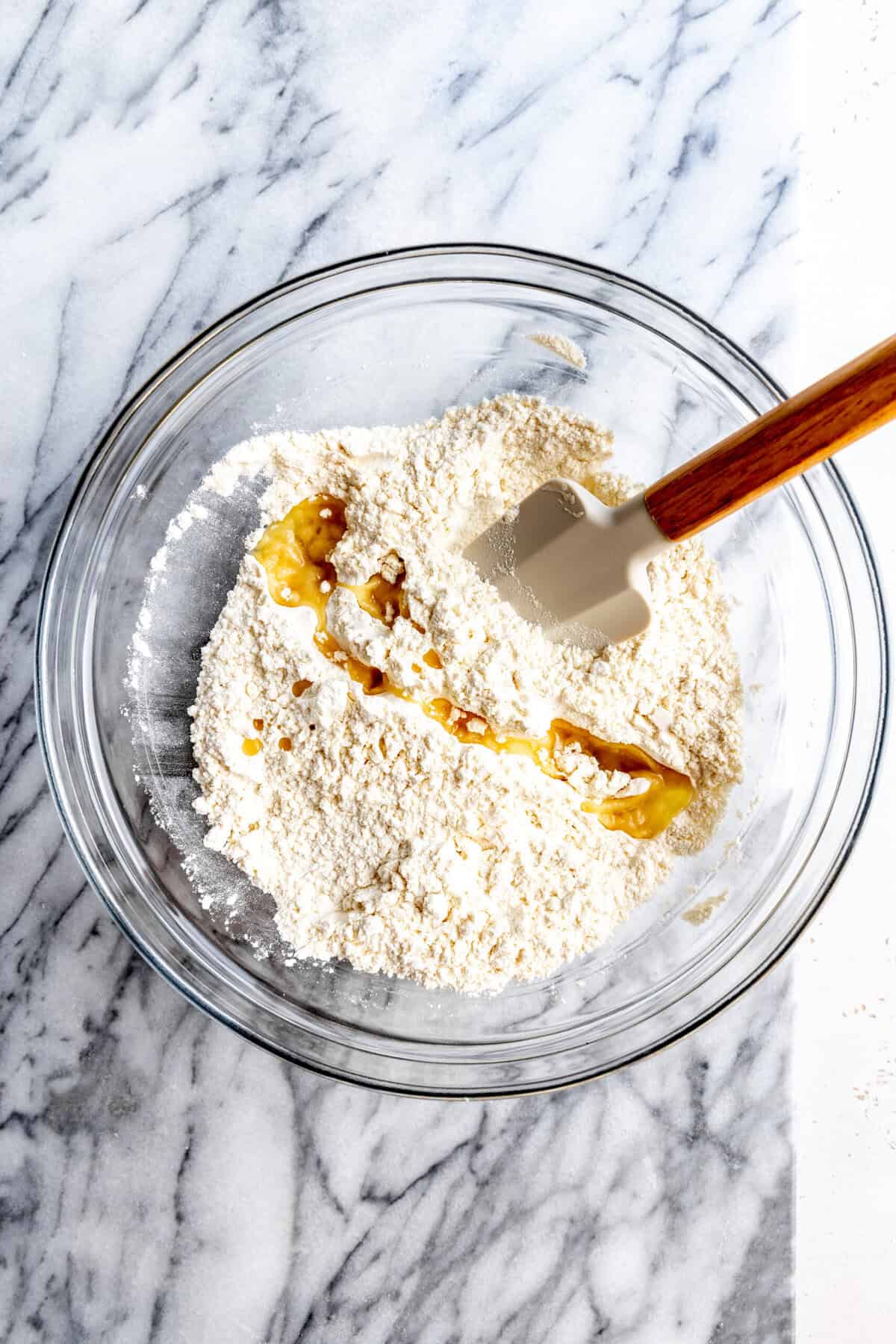
Tips
Here are some helpful tips for making homemade pizza dough so it turns out soft, chewy, and perfect every time:
- Activating the Yeast: Use warm water around 110°F-any hotter and it could kill the yeast. Let the yeast, sugar, and water sit for 5-10 minutes until it's foamy before adding flour. If it doesn't foam, start over with fresh yeast.
- Mixing & Kneading: Add flour gradually to prevent the dough from becoming too dry.
Knead for 8-10 minutes by hand (or 5-6 in a stand mixer) until smooth, elastic, and slightly tacky but not sticky. If dough is too sticky, add flour 1 tablespoon at a time. - Rising the Dough: Place dough in a lightly oiled bowl, cover, and let rise in a warm, draft-free spot until doubled in size (about 1-2 hours). For deeper flavor, let it rise slowly in the fridge overnight.
- Shaping & Handling: Punch down the dough gently after rising, then divide and shape. Don't overwork the dough when shaping-it may spring back. If it does, let it rest 5-10 minutes to relax the gluten. Stretch by hand rather than rolling for a lighter, airier crust.
- Baking: Bake on a preheated pizza stone or baking sheet for extra crispness.
High heat is key: aim for 450-475°F. Brush the crust with olive oil before baking for added flavor and golden color.
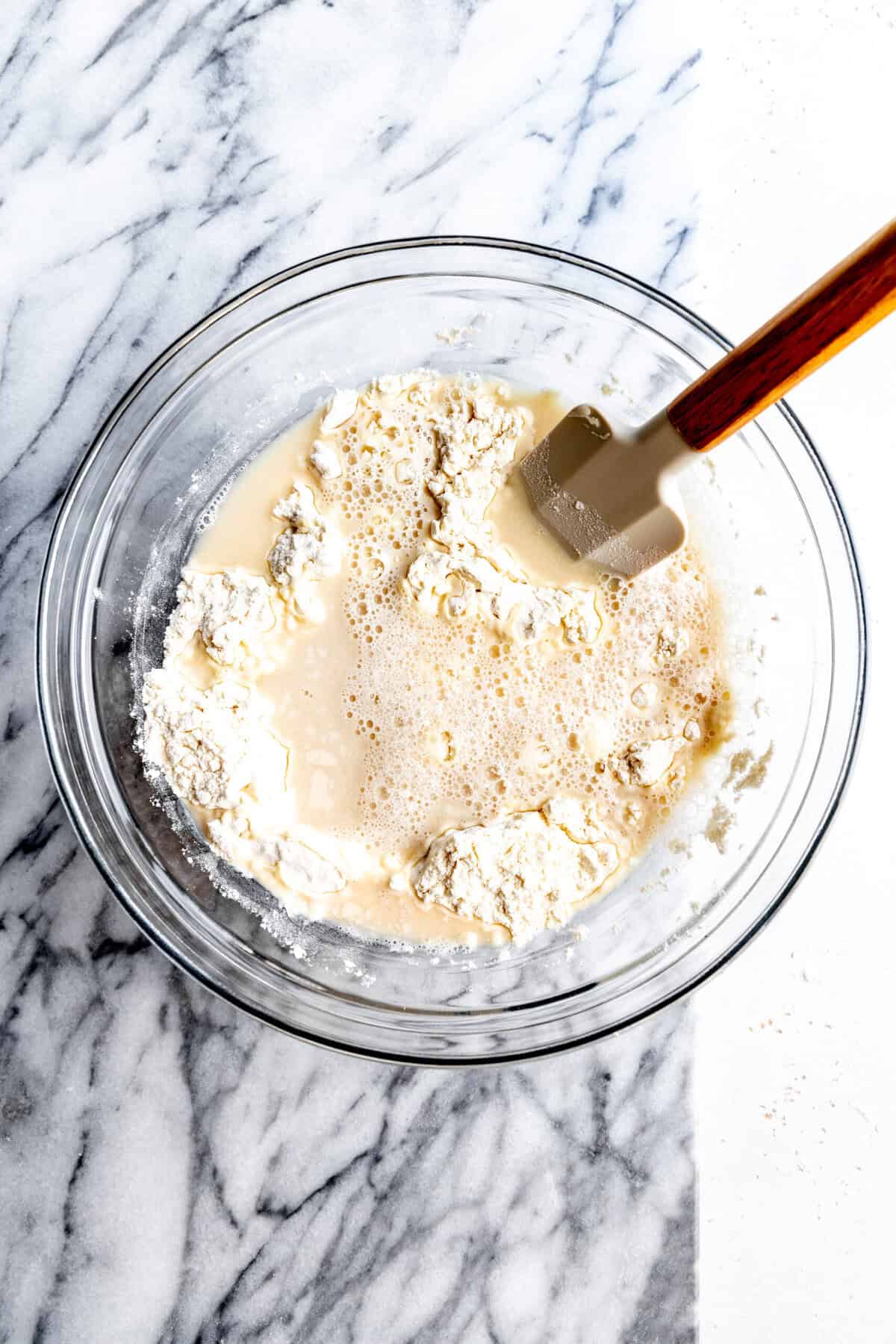
What to Look for in a Great Pizza Pan
Here's a guide to what makes a great pizza pan, the trade-offs between different materials, and some solid product suggestions if you're looking to upgrade.
| Feature | Why It Matters |
|---|---|
| Material | Determines heat conduction, evenness, durability, how crisp the bottom crust gets. |
| Thickness / Gauge | Thicker pans retain heat better and resist warping, giving an evenly baked crust. |
| Perforations or Vented Design | Holes let moisture escape, helping avoid soggy bottoms. |
| Size & Fit | Should match your oven dimensions, allow good airflow, and leave space for turning/stretching the dough. |
| Finish / Non-stick / Seasoning | Nonstick coatings or well-seasoned metal help with release and cleanup. |
| Heat Retention | Materials like steel or cast iron hold heat well—helpful for multiple pizzas or deep-dish styles. |
What's Best for Your Pizza Style?
- Thin crust / fast bake → Go with steel or perforated steel pan. Gets hot quickly; brown crust.
- Deep dish or pan-style → Use cast iron or deep dish stone; heat retention helps with long bakes.
- Frequent baking / multiple pizzas → A heavy pan or steel that holds heat well helps with consistent results.
- Low maintenance → Nonstick, vented pan; avoid fragile stones if you'll move them often.
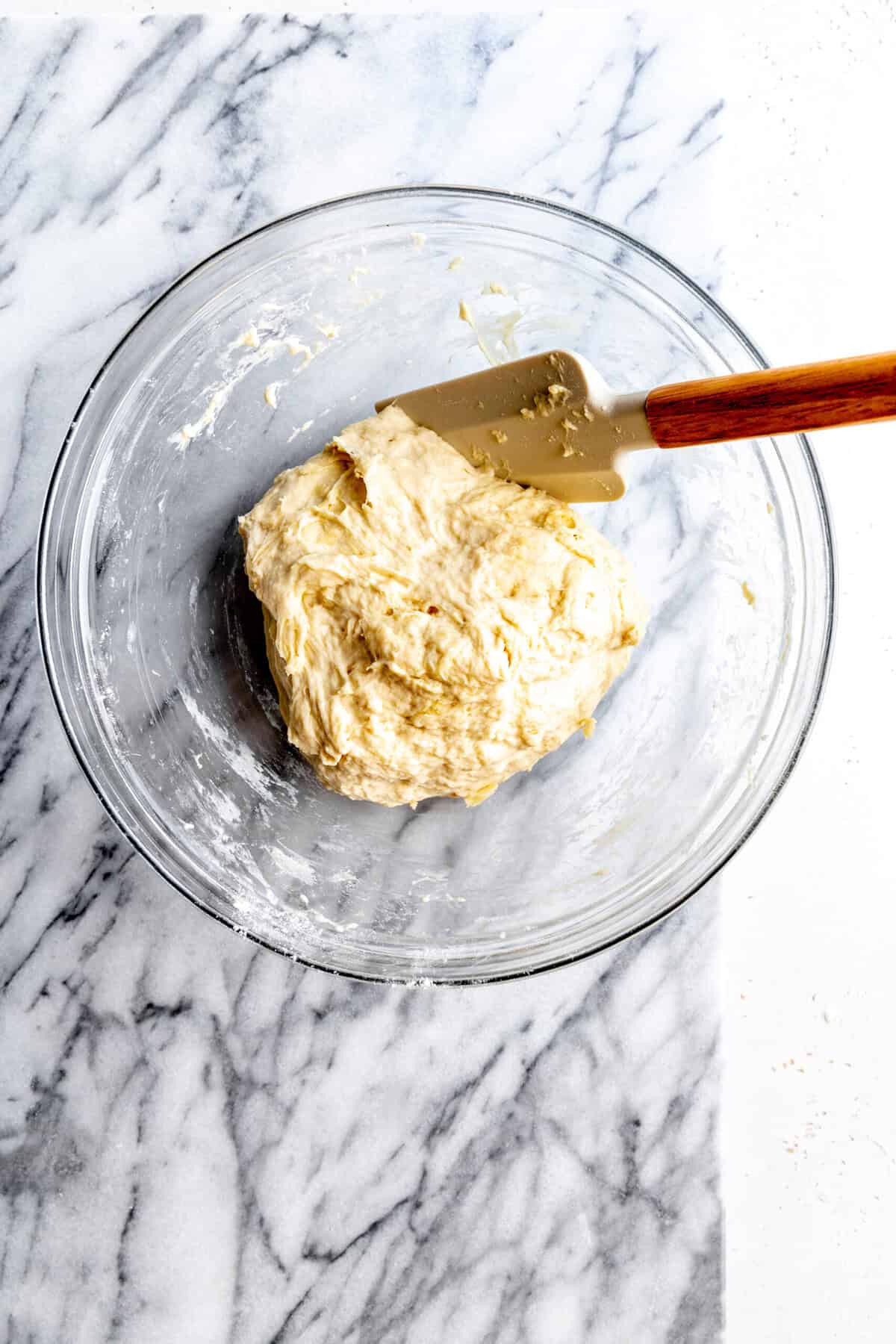
More Uses for Homemade Pizza Dough
Homemade pizza dough is surprisingly versatile-you can turn one batch into all sorts of baked treats beyond pizza night. Here are some great uses:
- Calzones & Stromboli - Fold dough around fillings like veggies, vegan cheese, and sauce for a portable meal.
- Breadsticks or Garlic Knots - Roll small pieces, twist or tie, and bake; brush with garlic butter or olive oil + herbs.
- Flatbreads - Stretch into thinner rounds, cook on a skillet or grill, and top with spreads, hummus, or roasted veggies.
- Focaccia-style bread - Press dough into a pan, dimple with your fingers, drizzle with olive oil, and sprinkle with herbs.
- Dinner Rolls - Portion into small balls, proof, and bake for soft pull-apart rolls.
- Pretzels or Pretzel Bites - Shape into twists or nuggets, dip in baking soda water, and bake for a chewy snack.
- Empanada-style pockets - Stuff circles of dough with savory or sweet fillings, fold, and seal.
- Bread bowls - Shape into rounds, bake, and hollow slightly to fill with soup or dip.
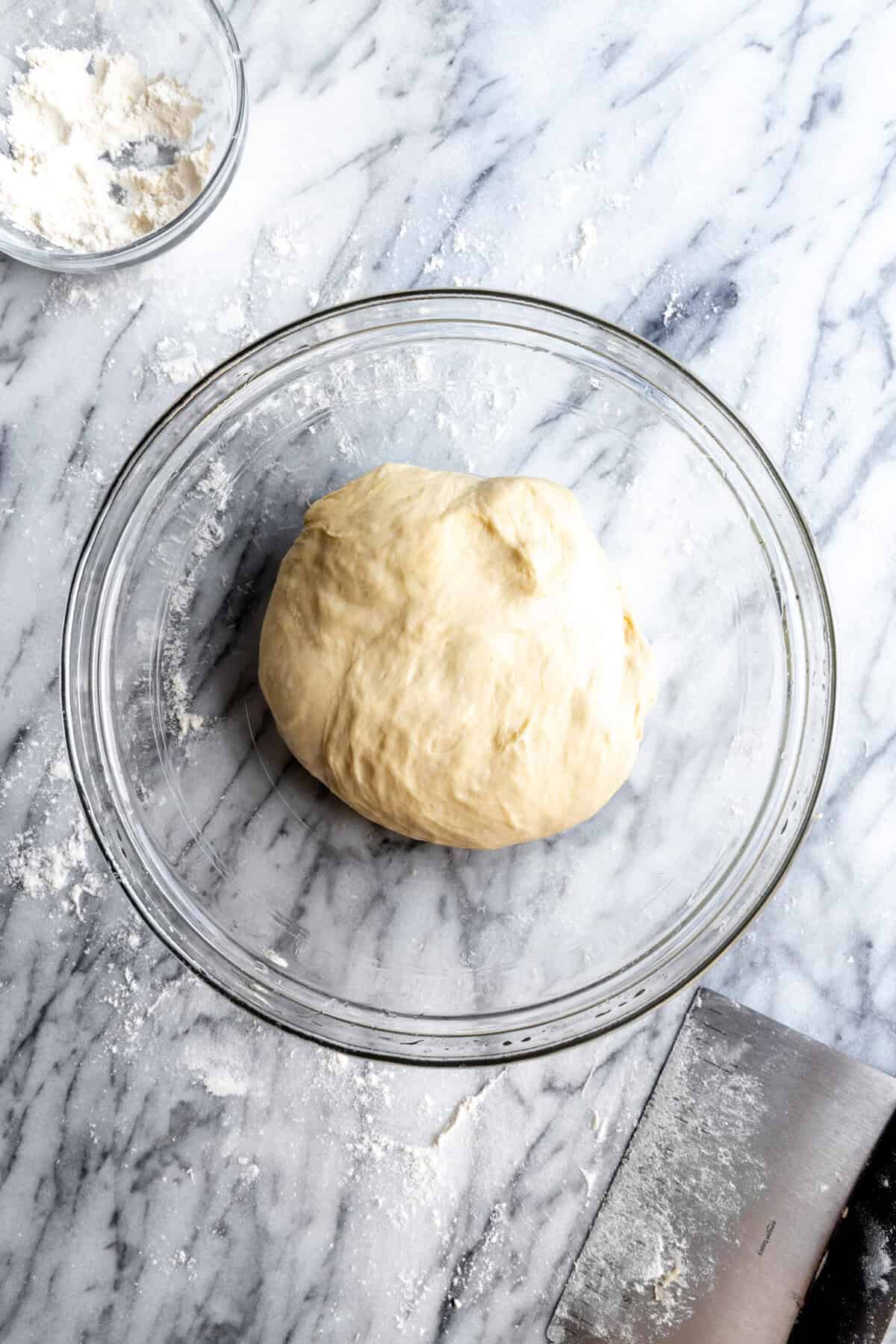
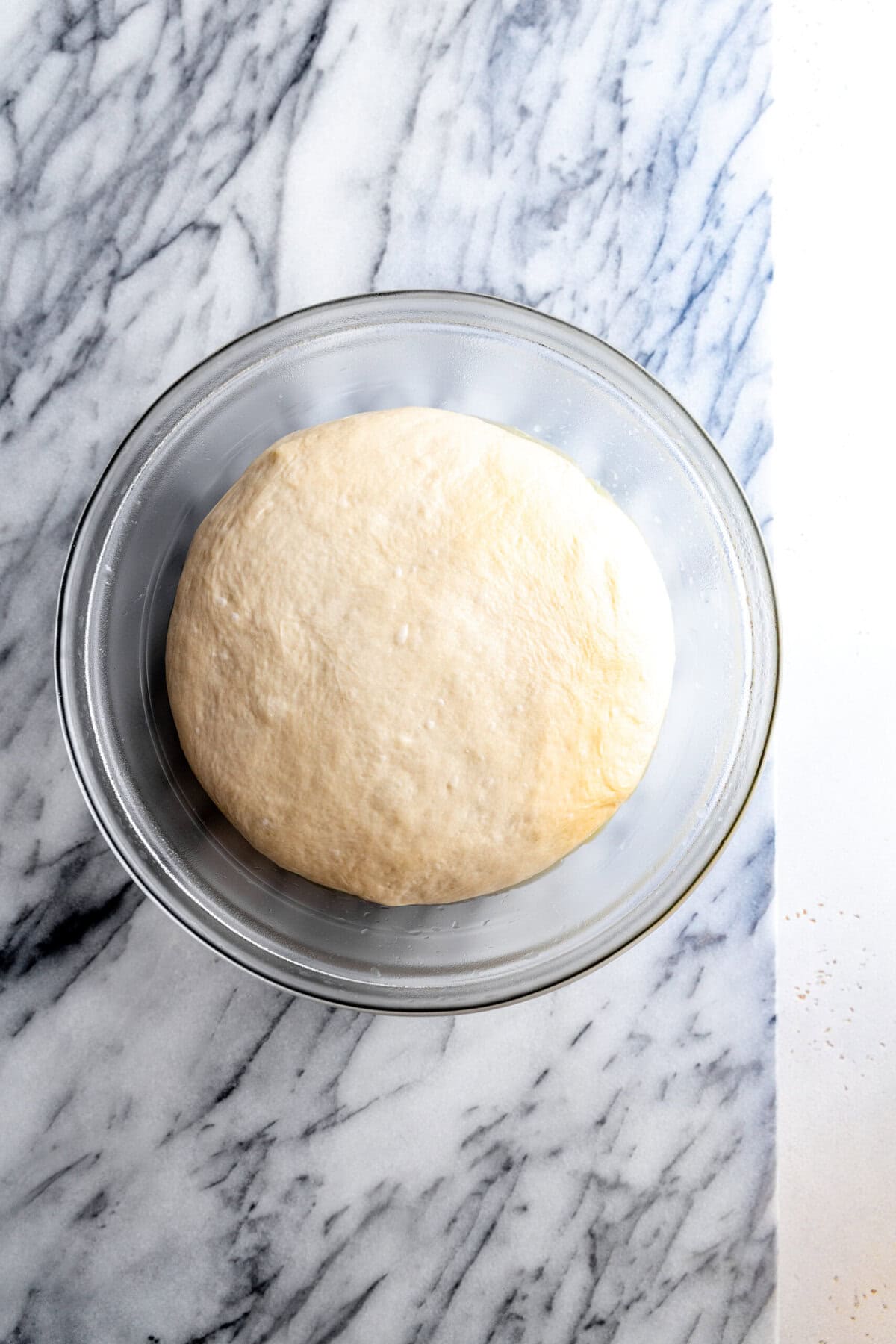
Frequently Asked Questions
Yes! All-purpose flour works fine, but bread flour has more protein, which gives the dough extra chewiness. If you prefer a softer crust, go with all-purpose.
Typically 1-2 hours at room temperature until doubled in size. For more flavor, you can let it rise in the fridge for up to 24 hours.
Not usually, unless your toppings are very wet (like fresh tomatoes). If you want an extra-crisp bottom, you can par-bake the dough for 5-7 minutes before topping.
Most often it's inactive yeast or water that was too hot or too cold. Make sure your yeast is fresh and the water is around 110°F.
Yes! After rising, wrap the dough tightly in plastic wrap - portion if you doubled the recipe. Freeze up to 1 month. Thaw in the fridge overnight before using.
Bake on a preheated pizza stone or steel at high heat (450-475°F). Brushing the crust with olive oil also helps it crisp and brown beautifully.
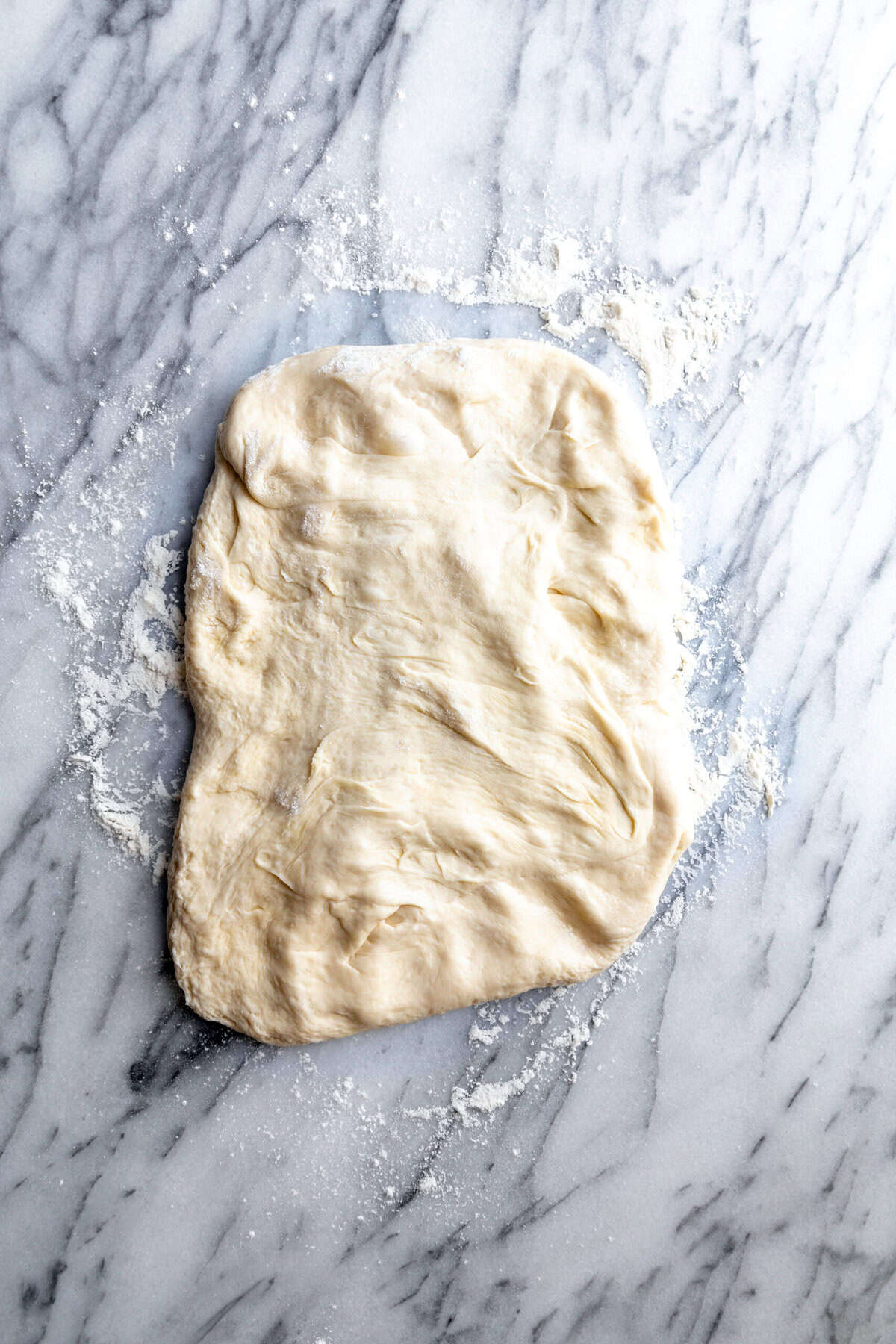
Storage
Here's how to store prepared pizza dough to keep it fresh and workable:
Short-Term Storage (Refrigerator)
- Lightly coat the dough ball with olive oil to prevent sticking.
- Place it in a sealed airtight container or wrap tightly in plastic wrap.
- Refrigerate for up to 3 days.
- Bring to room temperature for 30-60 minutes before shaping-it makes stretching easier.
Long-Term Storage (Freezer)
- Divide the dough into individual portions for single pizzas.
- Wrap each portion tightly in plastic wrap, then place in a freezer bag.
- Freeze for up to 1 month.
- Thaw overnight in the fridge, then let sit at room temperature 30-60 minutes before using.
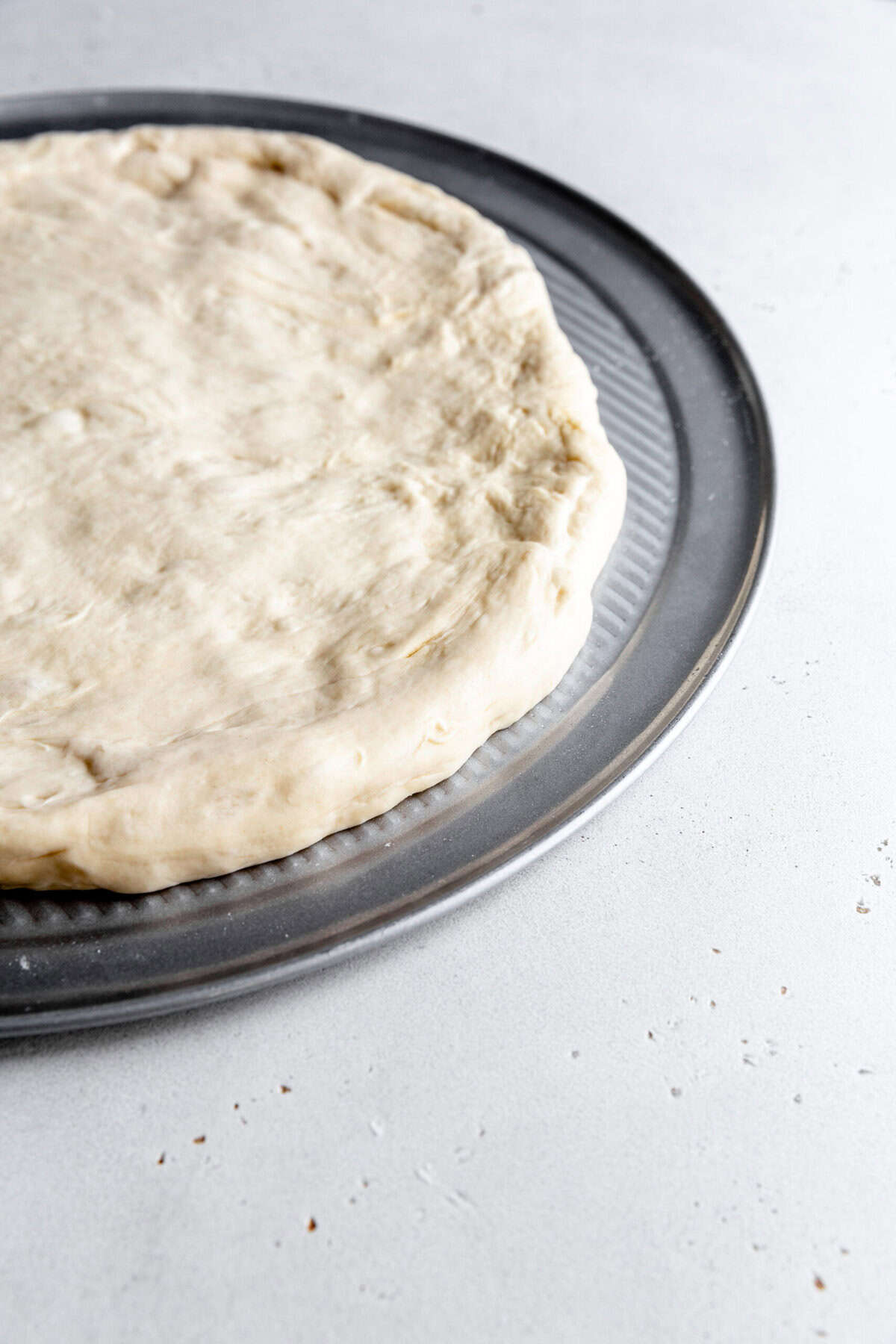
If you make this recipe be sure to tag @censoredbaker on Instagram!
PrintHomemade Pizza Dough
Easy, homemade pizza dough. Comes together using only 5 ingredients and minimal equipment!
- Prep Time: 30 minutes
- Rise Time: 90 minutes
- Total Time: 2 hours
- Yield: 1 12-inch Pizza 1x
- Category: How To
Ingredients
1 cup warm water (about 110 degrees F)
1 tablespoon granulated sugar
1 packet active dry yeast
2 ¼ cups bread flour
1 tablespoon olive oil
1 teaspoon salt
Instructions
- Bloom: Begin by blooming your yeast. Add the granulated sugar and active dry yeast directly to the measuring cup with the warm water. Stir well and cover. Set aside to bloom for about 5 minutes or until mixture begins to puff up.
- Mix: Add the bread flour, olive oil and salt to a large mixing bowl and stir together with a rubber spatula or wooden spoon. Form a well in the center of your dry ingredients and pour in the yeast mixture. Stir together, continually scraping down the sides of the bowl, until a wet dough comes together. The dough should begin to pull away from the sides of the bowl as you stir.
- Knead: Turn the dough out onto a well-floured surface. Sprinkle more flour on top of the dough and dust your hands with it. Knead the dough for 5-10 minutes. (If you're new to kneading be sure to check out this post on How to Knead Dough). If the dough feels too sticky, sprinkle in more flour. Do not add more than 1 tablespoon at a time. Your dough is ready when you can poke it with your finger and it slowly bounces back.
- Rise: Lightly grease a mixing bowl with olive oil. Place your dough in the bowl, turning it several times to coat all sides in oil. Cover the bowl with plastic wrap and set in a warm place in your kitchen for about 90 minutes or until the dough has doubled in size.
- Shape: Punch down the dough and turn out onto a lightly-floured surface. Using your hands or a rolling pin, gently shape the dough into a 10-12 inch circle. The dough should be about ½ inch thick. Lift the edge of the dough to create a 1 inch lip for the crust.
- Bake: If you are following another recipe, bake your pizza according to those recipe's instructions. If you are free-styling, preheat oven to 450 degrees F (232 C) and lightly grease a baking sheet with olive or avocado oil. Transfer the prepared dough to the pan and dress with all of your favorite toppings. Lightly brush the crust with more oil. Bake pizza in preheated oven for 14-16 minutes or until crust is golden brown.
Notes
*Get Ahead: You can prepare this pizza dough the night before! After kneading, place the dough in a well-oiled bowl as instructed in the recipe. Cover and place in the refrigerator to chill for 8-12 hours. Do not chill for longer than this as dough will over-proof!
*Rest: If your dough keeps shrinking as you are rolling it out, cover it and allow it to rest at room temperature for 10 minutes before continuing.
*Extra: This recipe is easily doubled if you'd like to make 2 pizzas or freeze half the dough for later!


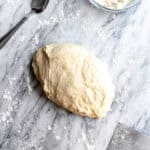

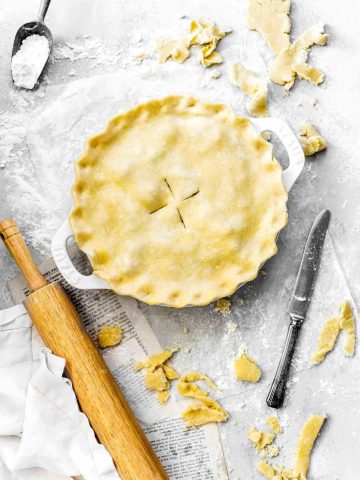


Leave a Reply